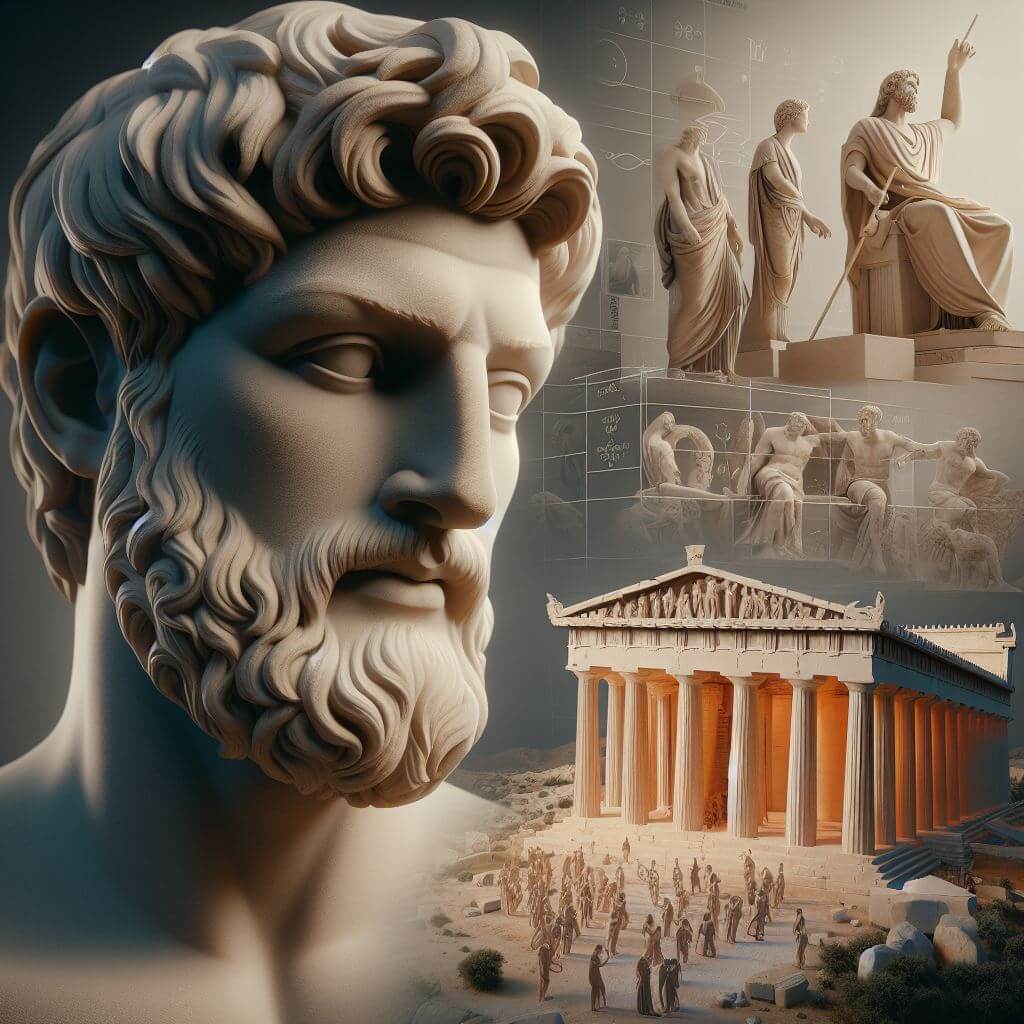Discover the life and works of Phidias, the renowned Athenian sculptor of the 5th century B.C., who revolutionized classical art with his idealized yet lifelike depictions of the human form. Explore his contributions to the Acropolis and the Parthenon, overseeing a monumental building program that reflected the spirit of Athens.

Phidias; Athenian sculptor of the 5th century b.c., who developed the idealized yet lifelike concept of the human form that is the essence of the classical style.
Life:
Phidias was born in Athens before 480 b.c. and was trained as a painter and sculptor, probably by Hegias of Athens. He worked on public commissions in various Greek cities—Pellene, Delphi, Thebes, Plataea, and Olympia— but chiefly in Athens. In 447 he was appointed by Pericles to oversee a great building program to make the Acropolis reflect the patriotism, piety, and new ascendancy of Athens. Liberally supplied with public funds, Phidias designed all the sculpture of the Parthenon, supervised its execution, and himself carved three huge figures.
In 432, Pericles’ political enemies accused Phidias of stealing some of the gold from one statue, the Athena Parthenos. He was cleared in court through weighing the statue’s detachable gold garments, but he was then charged with impiety for depicting himself and Pericles on Athena’s shield and was imprisoned. Some scholars believe he died in prison, while others believe that he escaped to Olympia, where he created a magnificent statue of Zeus. Phidias died about 430 b. c.
Works:
Knowledge of Phidias’ freestanding works depends chiefly on statuettes, coins and gems, Roman copies, and accounts by ancient authors. Phidias endowed his figures with a sense of life that was lacking in austere Archaic sculpture and carefully proportioned work of his contemporaries. He was especially skillful at casing drapery that appeared to flow over the body without concealing it. At the same time, he gaVe his figures a grandeur, balance, and serenity far removed from the emotional, realistic individualism of later Hellenistic sculpture.
Phidias was master of many techniques. An Athena at Pellene and the Aphrodite Ourania at Elis were chryselephantine; that is, clothed areas were of gilded or gold-sheathed wood and unclothed areas of ivory. The Athena Areia at Plataea was of gold and marble. Solid marble works included the Amazon at Ephesus and the lovely unhelmeted Athena Lemnia on the Acropolis. Also on the Acropolis were two great bronzes—the Apollo Parnopios and the Athena Promachos that held a Nike (statue of Victory) in its right hand and a shield in its left. The Athena was so tall (25 feet, or 7.5 meters) that sailors rounding Cape Sounion could see the sun glinting on her helmet and spear.
Phidias’ masterpieces were considered in his time to be two awesome chryselephantine cult statues—the standing, helmeted Athena Parthenos in the Parthenon and the seated, garlanded Zeus in the temple at Olympia. Each towered about 40 feet (12 meters) high and bore a Nike in the right hand and a symbolic staff in the left. The Athena’s shield and the Zeus’ throne were richly ornamented. The Zeus, inspired by Homer, was one of the Seven Wonders of the World.
The unity of conception and style of the marble’ sculpture that Phidias designed for the metopes, frieze, and pediments of the Parthenon is remarkable, considering the vast size of the task and the numbers of artists employed. Much of it was removed to the British Museum as the Elgin Marbles.